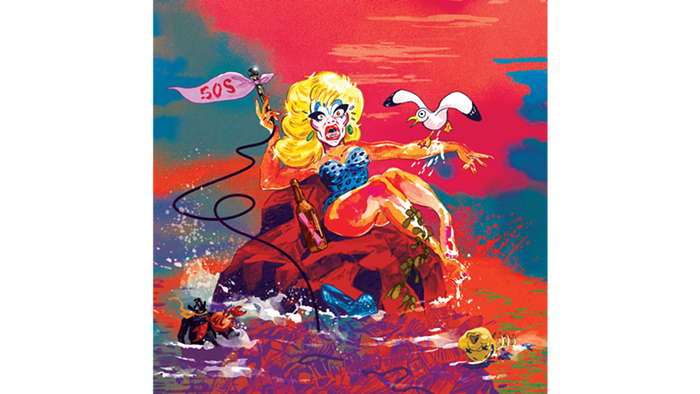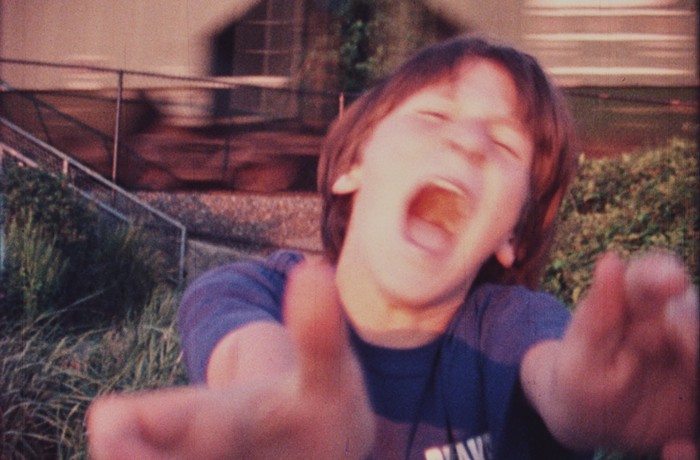"The House of Sound will never die." Those disembodied words conclude the audio portion of Portland filmmaker and artist Vanessa Renwick's installation The House of Sound, reverberating around a gallery she has converted into an homage to the now-defunct record store of the same name. The speaker, a former patron who appeared alongside many on a five-hour memorial broadcast on KBOO last month, had just completed a kinetic, beat-inflected eulogy for the record shop, its notorious 8-track tape bootlegs, and prominent role as a community hub along the North Williams corridor. With Renwick's installation, she is doing her part to make sure that, at least, the House of Sound's memory never dies.
Entering the New American Art Union, one immediately confronts the store's iconic signage, reclaimed from the razed building that housed it and surrounded by dozens of votive candles. To the south of the sign, Renwick presents a time-warped lounge for spinning records: a pair of vintage sofas crowds an orange shag rug, a turntable, and a pair of matching speaker cabinets. For all the transporting power of music, Renwick recreates a space where that past, discussed with such animation on the KBOO broadcast, can exist—if only for the length of a record.
To underscore the impossibility of revisiting an unrecoverable time, a recent film of the neighborhood plays across from the lounge, capturing North Williams' wet streets and unused lots in ghostly black-and-white. Shot primarily from a passing car, the footage is lyrical and, in its panning glimpses, insistent that time is sweeping past us, taking things we care about away from us. Throughout the film, Renwick returns to a shot of the empty lot where the House of Sound used to stand. Seen through a lattice of chain link, the camera circles the lot, taking in the space without lingering. Once out of sight, the imagery shuffles back to the homes and buildings of the neighborhood, those structures that remain intact in the face of such a glaring absence. Her funereal film—gray and wintry—feels like a peek into some bygone era, but the emotionally frigid landscape she depicts is, without doubt, the present. Perhaps she sees a community mourning or, then again, it could be waiting to burst into song.













